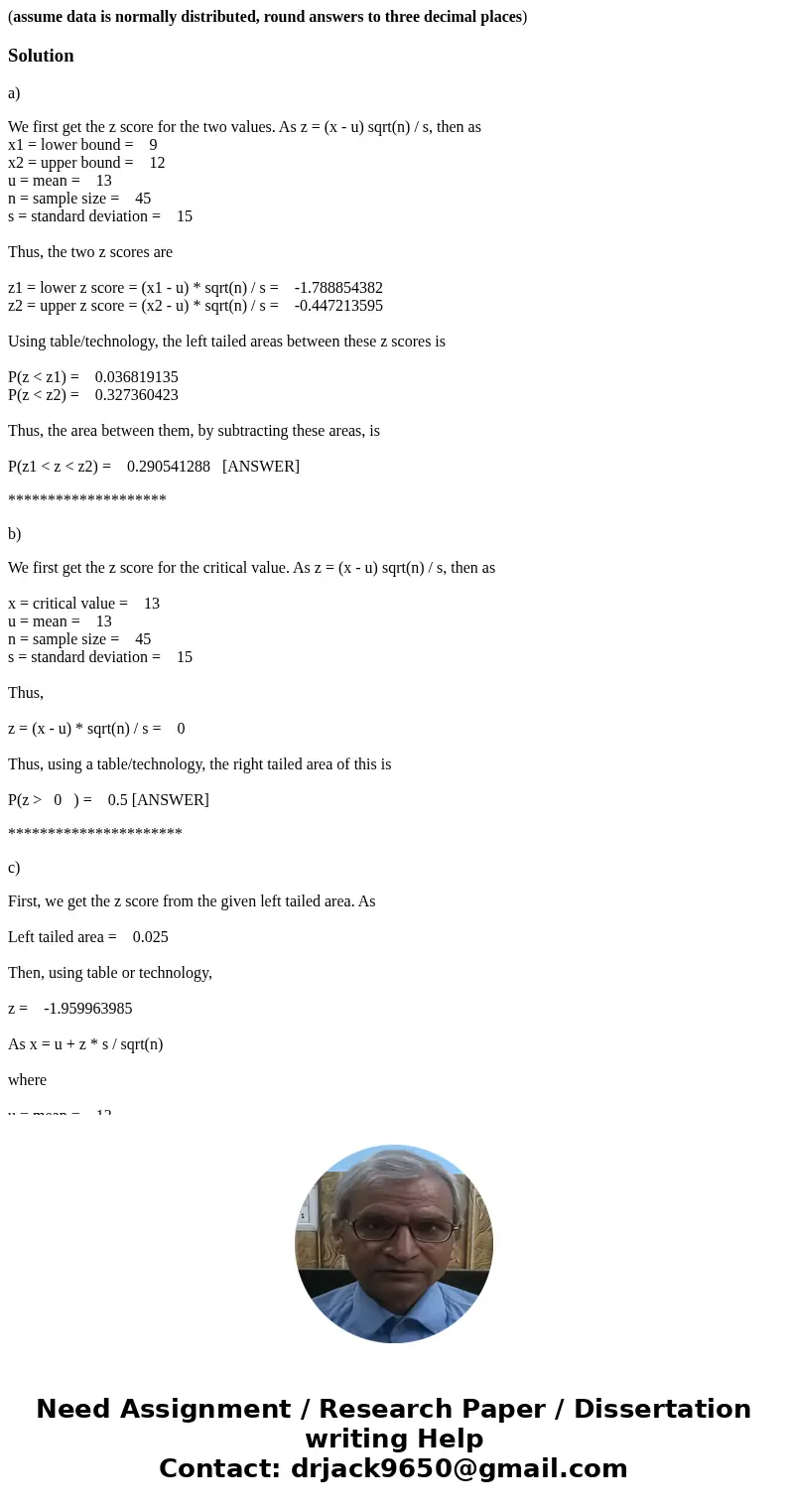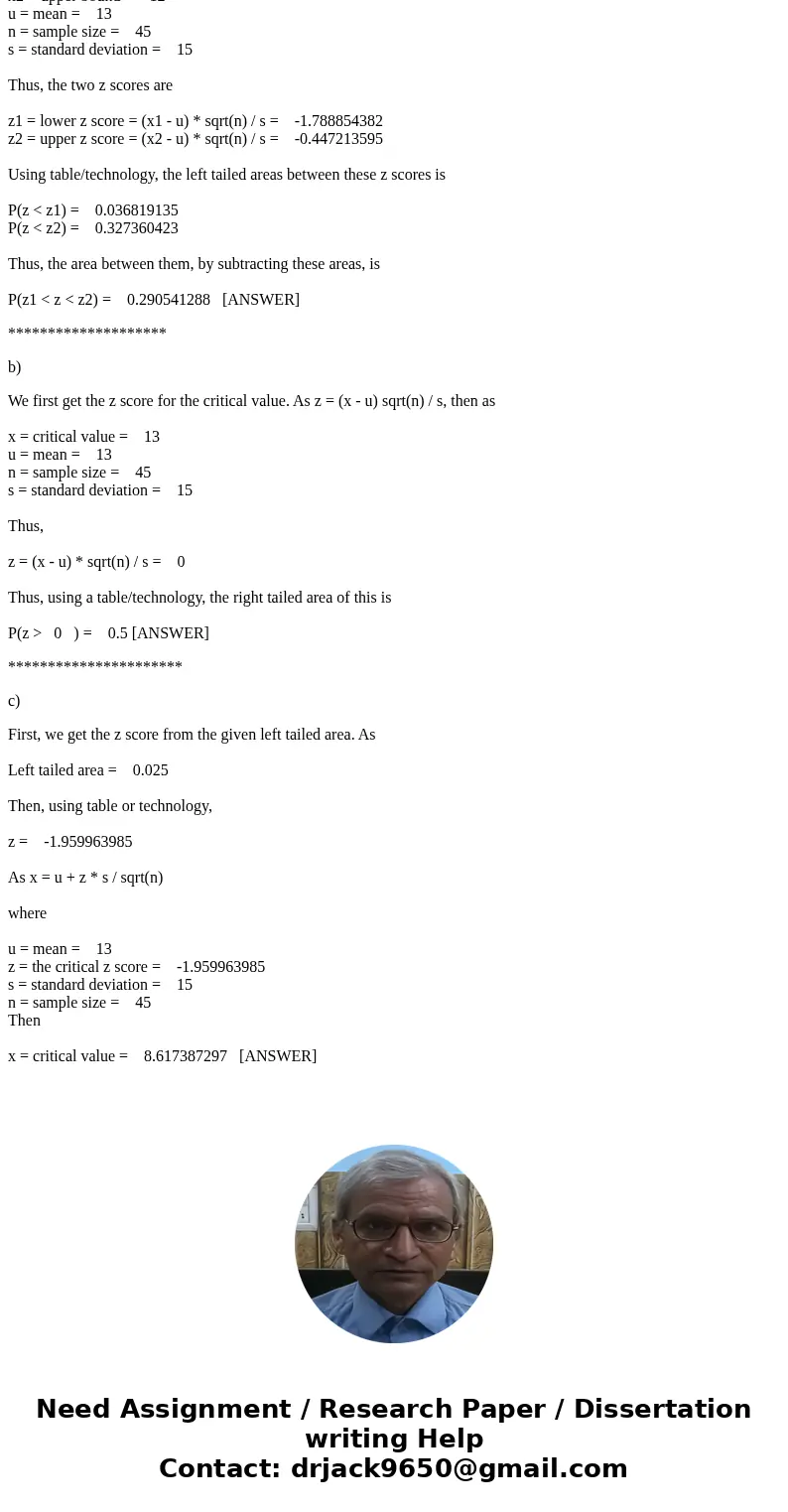assume data is normally distributed round answers to three d
(assume data is normally distributed, round answers to three decimal places)
Solution
a)
We first get the z score for the two values. As z = (x - u) sqrt(n) / s, then as
x1 = lower bound = 9
x2 = upper bound = 12
u = mean = 13
n = sample size = 45
s = standard deviation = 15
Thus, the two z scores are
z1 = lower z score = (x1 - u) * sqrt(n) / s = -1.788854382
z2 = upper z score = (x2 - u) * sqrt(n) / s = -0.447213595
Using table/technology, the left tailed areas between these z scores is
P(z < z1) = 0.036819135
P(z < z2) = 0.327360423
Thus, the area between them, by subtracting these areas, is
P(z1 < z < z2) = 0.290541288 [ANSWER]
********************
b)
We first get the z score for the critical value. As z = (x - u) sqrt(n) / s, then as
x = critical value = 13
u = mean = 13
n = sample size = 45
s = standard deviation = 15
Thus,
z = (x - u) * sqrt(n) / s = 0
Thus, using a table/technology, the right tailed area of this is
P(z > 0 ) = 0.5 [ANSWER]
**********************
c)
First, we get the z score from the given left tailed area. As
Left tailed area = 0.025
Then, using table or technology,
z = -1.959963985
As x = u + z * s / sqrt(n)
where
u = mean = 13
z = the critical z score = -1.959963985
s = standard deviation = 15
n = sample size = 45
Then
x = critical value = 8.617387297 [ANSWER]


 Homework Sourse
Homework Sourse